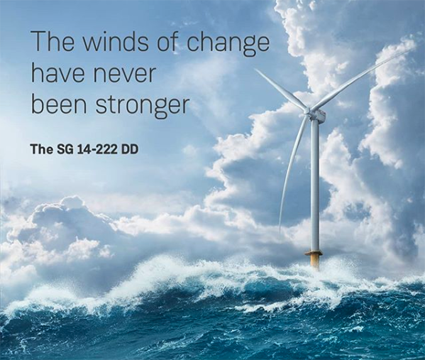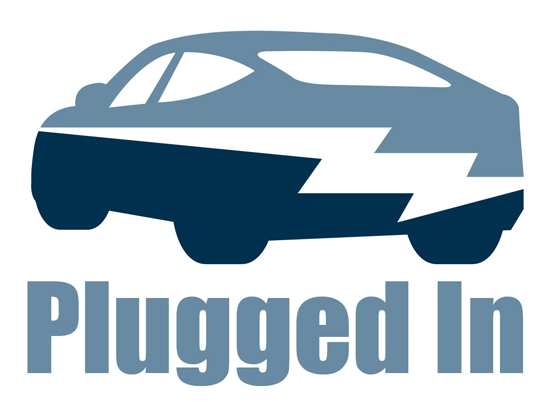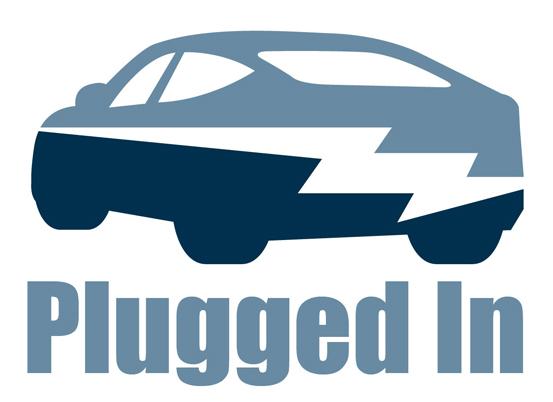Virginia Leaps Forward with Offshore Wind Power and Other States Regress
 Tuesday, May 26, 2020 at 4:00PM
Tuesday, May 26, 2020 at 4:00PM  Grant Gerke
Grant Gerke  SG 14-222 DD offers a14 MW capacity and its all-in-one blade design.Virginia hasn't been known as a cleantech state, but many lawmakers and the state's main utility, Dominion Energy, are now whistling a different tune as the Governor recently signed into law the Virginia Clean Economy Act. The new legislation drastically changes how the state procures power, sets renewable portfolio standards, adds efficiency standards and offshore wind, too. Under the Clean Economy Act, the state set offshore wind power requirements at 5,200 megawatts (MW), which is a ground-shaking number due to the fact that amount of wind power can power more than a million homes.
SG 14-222 DD offers a14 MW capacity and its all-in-one blade design.Virginia hasn't been known as a cleantech state, but many lawmakers and the state's main utility, Dominion Energy, are now whistling a different tune as the Governor recently signed into law the Virginia Clean Economy Act. The new legislation drastically changes how the state procures power, sets renewable portfolio standards, adds efficiency standards and offshore wind, too. Under the Clean Economy Act, the state set offshore wind power requirements at 5,200 megawatts (MW), which is a ground-shaking number due to the fact that amount of wind power can power more than a million homes.
As part of this new legislation, the Dominion Energy Coast Virginia Offshore Wind (CVOW) commercial project is wasting no time, as it announced that Siemens Gamesa "secured its second major order of the 14 MW turbine" for the 2,640 MW installation, according to renews.biz.
Coming in just under 2,700 MW, this project allows Viriginia to take a big step toward its goal of 100% clean energy by 2045, as this installation will produce approximately enought electricity for 650,000 homes. Besides the installation, according to renews.biz, Siemens Gamesa "continues to work with local stakeholders to investigate a potential blade manufacturing facility for its turbines on the US east coast."
Besides the largess, speculation around the project has Siemens Gameas using its new SG 14-222 DD offshore wind turbine, just released in May 2020. The SG 14-222 DD offers a14 MW capacity and its all-in-one blade design. According to Siemens Gamesa after permitting and final decisions, the installations should be completed by 2026.
Other U.S. Offshore News (the Bad News)
In general, the U.S.'s East Coast is leading the way in offshore wind power projects and bids, while California is trying to be the leader on the West Coast and has been targeting a 800 sq.-mile area off the coast for some time—the central coast. However, the Dept. of Defense is claiming issues with its training operations off the central coast. The DoD offered a counter map proposal for the proposed area in late 2019 and the comment period ended on May 15, 2020.
 California and the federal Bureau of Ocean Energy Management (BOEM) previously identified some 600 sq.-mi. of technically developable sea space off the Central Coast, according to Danielle Osborn Mills, dir. of the AWEA of California.
California and the federal Bureau of Ocean Energy Management (BOEM) previously identified some 600 sq.-mi. of technically developable sea space off the Central Coast, according to Danielle Osborn Mills, dir. of the AWEA of California.
In a recent Greentech Media article, Danielle Osborn Mills, director of the American Wind Energy Association of California was quoted as saying, ";The new maps released by the California Energy Commission do not yet identify adequate space for offshore wind production at the scale needed to create a viable industry — or for California to achieve its climate goals." And Mills noted, "that California and the federal Bureau of Ocean Energy Management (BOEM) previously identified some 600 sq.-mi. of technically developable sea space on the Central Coast. "The new maps identify only about 80 sq-mi. of non-continuous commercially viable sea space within the existing BOEM Morro Bay Call Area—enough for one small project,” she said in a statement."
The debated area is some 30 miles off the central coast and the original 600 sq-miles of developed offshore wind power would deliver approximately 1,000 MW that could offer energy for approximately 2.5 million homes.
And then there's this recent development from Ohio, a notoriously anti-renewable state with regulators in the back pocket of legacy utilities and special interests (HB 6 subsidizes dirty power). According to Energy News Network, an offshore wind deal was agreed to in principle, but then the Ohio Siting Board said the "Icebreaker project could move forward but only if blades on the demonstration project’s six turbines are turned off every night for eight months of the year."
What?
This requirement was agreed upon by interested parties last May:
From Energy News Network:
After months of negotiations between LEEDCo and staff at the OPSB and Ohio Department of Natural Resources, the developer reached a compromise with regulatory staff last May that dropped the requirement. “We are stunned by the OPSB order today,” Karpinski said, noting that the added condition “reneges” on its agreement with OPSB staff. “
Throughout the OPSB proceedings in this case, we made it abundantly clear that a requirement to shut down the turbines from dusk to dawn for the majority of the year renders the project economically not viable.”|
>> EVP Reads | The Clean Economy Act is a Breakthrough for Viriginia and the South


Reader Comments